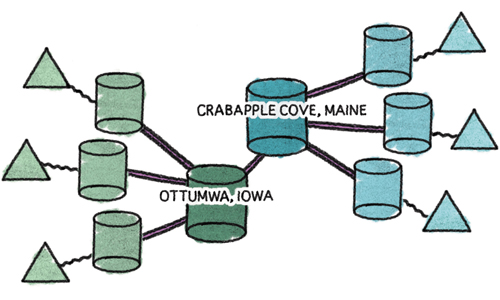Consider a development team that is split up in two cities. Half the team is in a satellite office in Crabapple Cove, Maine, and the other half is at the company’s headquarters in Ottumwa, Iowa. With a CVCS, they have to pick one city to hold the central server and everybody in the other city has to access it over an Internet link. With a DVCS (as shown in Figure 5.1, “Geographically Distributed Teams”), they can set up a central server in each city and use push and pull to synchronize them whenever as they want.
